
Castanospora is a monotypic genus of trees, constituting part of the plant family Sapindaceae. The sole species Castanospora alphandii, commonly known as brown tamarind, grows naturally in the Australian rainforests of north-eastern New South Wales and eastern Queensland as far north as the Wet Tropics rainforests of north-eastern Queensland.
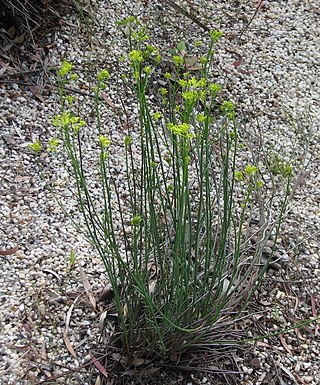
Glischrocaryon is a genus of flowering plants in the family Haloragaceae, endemic to Australia. Species occur in New South Wales, Victoria, South Australia and Western Australia include:
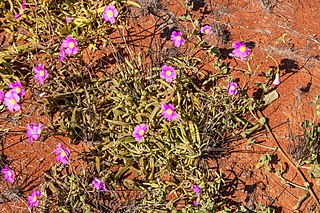
Calandrinia calyptrata, the pink purslane or small-leaved parakeelya, is an annual plant in the family Montiaceae. It is endemic to Australia.

Dichopogon is a genus of perennial herbs, native to Australia and New Guinea. It is included in the genus Arthropodium by some authorities, although recognized as a distinct genus by others. In the APG III classification system, it is placed in the family Asparagaceae, subfamily Lomandroideae.
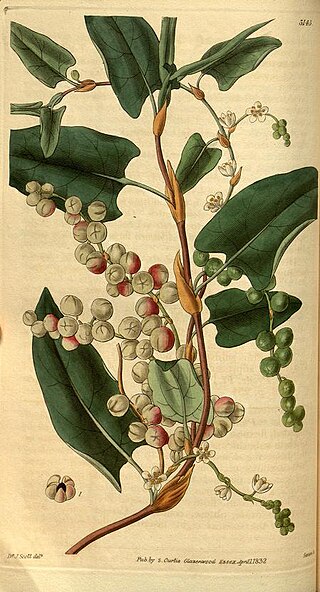
Muehlenbeckia adpressa, commonly known as climbing lignum, is a prostrate or climbing plant, native to Australia. It has thin red-brown stems up to 1 metre in length. The leaves are 1.5–6 centimetres (0.59–2.36 in) long and 1.5–3.5 centimetres (0.59–1.38 in) wide. It occurs in coastal areas of Western Australia, South Australia, Tasmania, Victoria and New South Wales.
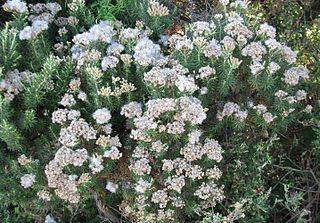
Ozothamnus turbinatus, the coast everlasting, is a shrub in the family Asteraceae, native to the states of New South Wales, Victoria, South Australia and Tasmania in Australia. It grows to between 1 and 2 metres in height.
Stuartina is a genus of small annual herbs in the tribe Gnaphalieae within the family Asteraceae, native to Australia.

Drabastrum is a monotypic genus of herbs or subshrubs in the family Brassicaceae. The sole species is Drabastrum alpestre which is native to New South Wales and Victoria in Australia.
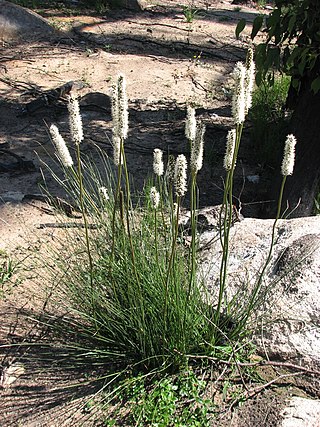
Xanthorrhoea minor is a species of grasstree of the genus Xanthorrhoea native to south-eastern Australia. It was one of the many species authored by the Scottish botanist Robert Brown.
Herpolirion is a genus of perennial herbs in the family Asphodelaceae, subfamily Hemerocallidoideae. The sole species is Herpolirion novae-zelandiae, commonly known as sky lily. It is native to New Zealand as well as the states of New South Wales, Victoria and Tasmania in Australia.
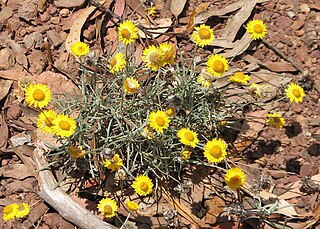
Leucochrysum albicans, commonly known as hoary sunray, is a species of plant in the family Asteraceae. It is endemic to Australia. It grows to 45 cm high and has grey-green woolly leaves that are between 2.5 and 10 cm long and 1 to 9 mm wide. The flowerheads appear between spring and summer. These have yellow centres surrounded by either white or yellow bracts.
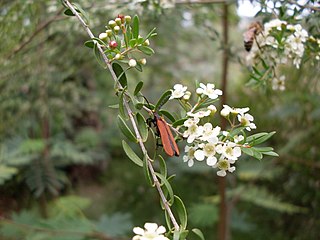
Sannantha pluriflora, commonly known as tall baeckea, is a flowering shrub or small tree species in the myrtle family, Myrtaceae. It is endemic to Australia. Plants grow to 4 metres high. White flowers appear in groups of three to seven between October and April in the species' native range. These have five rounded petals surrounding 8–15 stamens. The fruits are 2.5 to 3.5 mm in diameter.
Sannantha similis is a flowering shrub or small tree species in the myrtle family, Myrtaceae. It is endemic to Australia. Plants grow to 4 metres high. White flowers appear in groups of 3 to 7 between October and January in the species' native range. These have 5 rounded petals surrounding 8 to 15 stamens. The fruits are 2.5 to 3.5 mm in diameter.
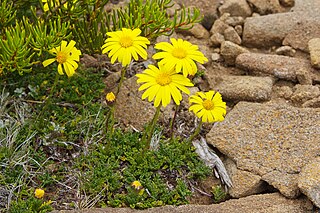
Scapisenecio pectinatus, synonym Senecio pectinatus, commonly known as alpine groundsel, is a species of flowering plant in the aster family. The species occurs in alpine areas of south-eastern Australia in peat-based soils. It has divided leaves forming a basal rosette and produces a single yellow flower head on a stalk up to 20 cm high.

Codonocarpus is a small genus of shrubs or small trees in the family Gyrostemonaceae.
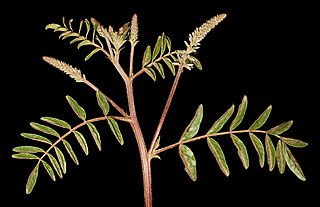
Glycyrrhiza acanthocarpa, with the common names native liquorice, and southern liquorice is a subshrub in the pea family, Fabaceae. The species is native to Australia. It grows to between 0.1 and 1 metre high. Narrow purple flowers appear between September and May in the species native range.
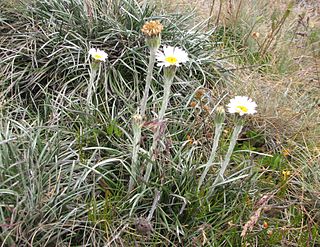
Celmisia pugioniformis, commonly known as slender snow-daisy, is a species of perennial herb in the family Asteraceae. It is native to south-eastern Australia. Leaves are 10 to 20 cm long and 2 to 6 mm wide, with an olive green or grey green upper surface. The daisy-like flowerheads, which are 6 to 8 cm in diameter, appear between December and February in the species native range. The species was formally described in 1992 in the Flora of New South Wales. Prior to 1992, plants had been included under the name Celmisia asteliifolia.

Ozothamnus cuneifolius, commonly known as wedge-leaf everlasting or wedge everlasting, is a shrub in the family Asteraceae. It is native to forests of the south-east of New South Wales and Gippsland in Victoria in Australia.

Cymbopogon refractus, commonly known as barbed wire grass, is a species of perennial grass in the genus Cymbopogon of the family Poaceae. It is native to Australia.

Acacia ulicifolia, commonly known as prickly Moses or juniper wattle is a shrub of the genus Acacia and the subgenus Phyllodineae, native to Australia.

















